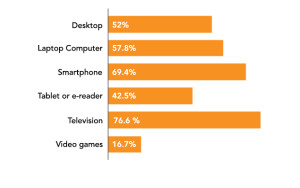 According to investment experts at Motley Fool, taking care of your flex spending surplus is a smart money move for November. For those who have flexible spending account (FSA) money to use before the end of the year, there are a number of ways you can ease eye care expenses with those funds.
According to investment experts at Motley Fool, taking care of your flex spending surplus is a smart money move for November. For those who have flexible spending account (FSA) money to use before the end of the year, there are a number of ways you can ease eye care expenses with those funds.
If you haven’t scheduled your yearly exam, make November the month to get your check-up and offset any deductibles. For those who have had their exam already this year, there are several ways you can use FSAs for the good of your eyes.
Computer eyewear. We are seeing more patients experiencing the effects of digital eye strain. Eyewear designed specifically for computer use is one way to make this aspect of modern life easier. Things like progressive lenses designed for mid-distance work, anti-reflective coating and blue light coating are some of the features that can benefit patients.
Prescription sunglasses. Many people are surprised that prescription sunglasses are a medical device and covered under FSAs. Ditch the clip-ons and treat yourself to a quality pair of sunglasses that are tailored to your eyes. Prescription sunglasses are a good alternative for contact lens wearers at the beach and pool, where contacts aren’t ideal. Anyone who uses readers will find prescription sunglasses very helpful.
Another advantage to prescription sunglasses is our ability to select the right UV protection for your needs, from blue-blockers and yellow lenses that heighten color contrast to gradient lenses that are lighter at the bottom (good choice for distance drivers).
Protective eyewear. It is estimated that the vast majority of eye injuries can be prevented with protective eyewear, but it has yet to catch on. Sports and home improvement projects are popular among our patients. Flex funds can make the difference between having the protection your need and a trip to the ER for an eye injury.
Schedule an appointment for an exam or talk to us about eyewear options. We are happy to help you find the right fit for your funds.





